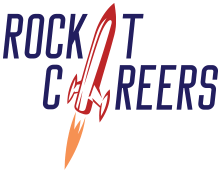When I first started working with a small family-owned business, they were eager to hire for a critical role—an office manager to support their growing roofing company. This was their first time using a recruiter, and they were excited about finding the perfect candidate. But as we sat down to review the job description they had written, I realized we had a bit of work ahead of us.
The description was short, vague, and didn’t clearly outline the expectations for the position. It lacked detail about daily responsibilities, necessary qualifications, and the company culture—critical elements to help attract qualified candidates. As a recruiter, I knew that one of the most important aspects of the hiring process is writing a strong job description. It’s the first point of contact with potential applicants, and if done right, it can make all the difference in finding the best fit.
So, after a few tweaks and some strategic additions, we transformed the generic description into one that stood out. A few weeks later, the business hired a highly skilled office manager who exceeded their expectations. This experience was a powerful reminder that the key to attracting the right candidates starts with a thoughtful, well-crafted job description.
1. Start with a Strong, Descriptive Job Title
The job title is the first thing candidates see, so it needs to be clear and direct. Avoid creative or obscure titles that could confuse applicants—stick with something that reflects the role accurately. For example, instead of “Office Guru,” use “Office Manager.” Be specific enough to set the job apart but general enough to attract a broader range of qualified applicants. If necessary, include a level like “Senior” or “Junior” to give more context to the role.
2. Clearly Outline Responsibilities and Expectations
This is where many job descriptions fall short. Candidates need to know what their day-to-day will look like. When writing this section, aim to provide a realistic glimpse into the role by listing specific tasks. For instance, if you’re hiring an office manager, instead of saying “handle administrative tasks,” be more specific: “manage schedules, process invoices, and coordinate office events.”
By offering this level of detail, potential applicants can better visualize themselves in the role, which helps filter out unqualified candidates while attracting those who are a better fit.
3. List Must-Have Skills and Qualifications
It’s crucial to clearly differentiate between “required” and “preferred” qualifications. Required skills are non-negotiable and should be highlighted as such—this could include a certain level of education, experience in a particular software, or specific certifications. Preferred qualifications might include industry experience or familiarity with certain processes, but these should be listed separately.
This helps applicants quickly assess if they meet the minimum qualifications, which can save both you and the candidates time during the hiring process.
4. Emphasize Company Culture
Job seekers today aren’t just looking for a paycheck; they’re looking for a company where they can grow and feel aligned with the culture. Be sure to include a section that describes your company’s values, work environment, and what makes it unique. This can include anything from flexible work schedules to a strong commitment to community involvement.
By giving a sense of what it’s like to work at your company, you’ll attract candidates who not only have the right skills but also align with your organizational values.
5. Make it Easy to Read
A job description should be concise and easy to skim, especially since candidates may be reviewing multiple postings. Use bullet points for key sections like job responsibilities and qualifications, and keep paragraphs short. Avoid jargon or overly technical language that might deter potential applicants who are otherwise qualified.
Clear and simple formatting not only improves readability but also ensures your posting is accessible to a wider audience.
6. Include Growth Opportunities
Top candidates often want to know where the role could take them. Include a section that outlines potential career development and advancement opportunities within the company. This shows applicants that you’re invested in their future, which can be a major selling point for high-caliber talent.
7. Offer Competitive Salary and Benefits Information
While some companies prefer to omit salary information, listing it can make a huge difference in the quality of applicants you attract. If you’re unable to provide a specific salary range, consider mentioning competitive or market-rate compensation.
Don’t forget to include a brief summary of benefits such as healthcare, retirement plans, vacation days, and any other perks like remote work options or professional development stipends. This not only makes the position more attractive but also sets clear expectations from the beginning.
8. End with a Call to Action
Finally, make it easy for interested candidates to apply by including clear instructions on how to submit their application. Whether you want them to upload a resume, complete an online application, or send a portfolio, be specific about what you’re looking for. This is your chance to encourage applicants to take the next step.
In the end, a well-crafted job description is one of the most powerful tools in the hiring process. It acts as both a filter and an invitation—helping you sift through unqualified candidates while drawing in those who are the perfect fit for the role. By taking the time to clearly outline responsibilities, expectations, and company culture, you can increase your chances of finding not just any candidate, but the right candidate.
And as I’ve seen with many small businesses, sometimes that extra attention to detail can make all the difference.

